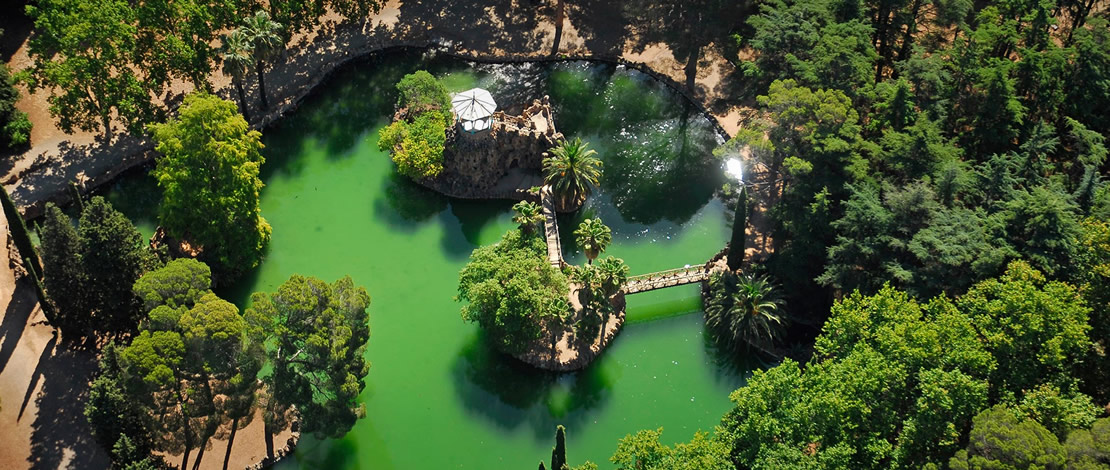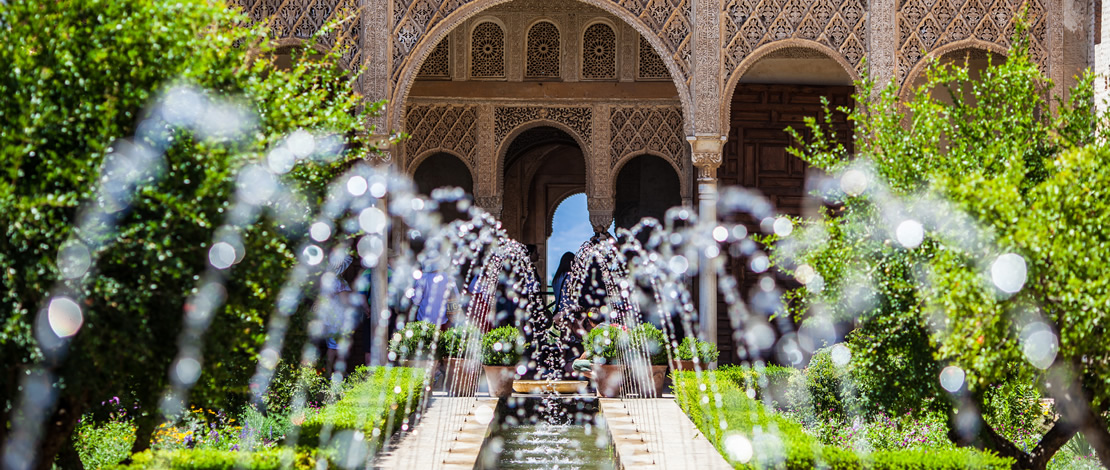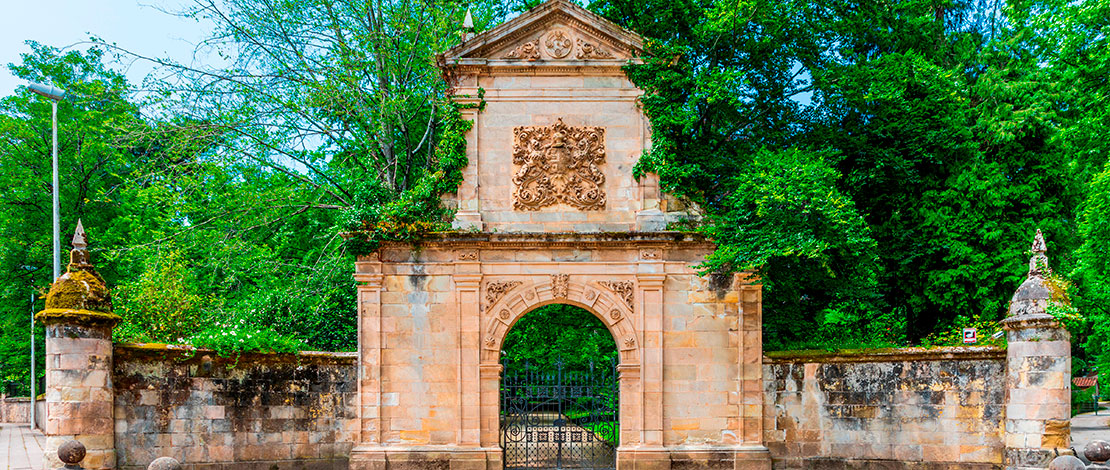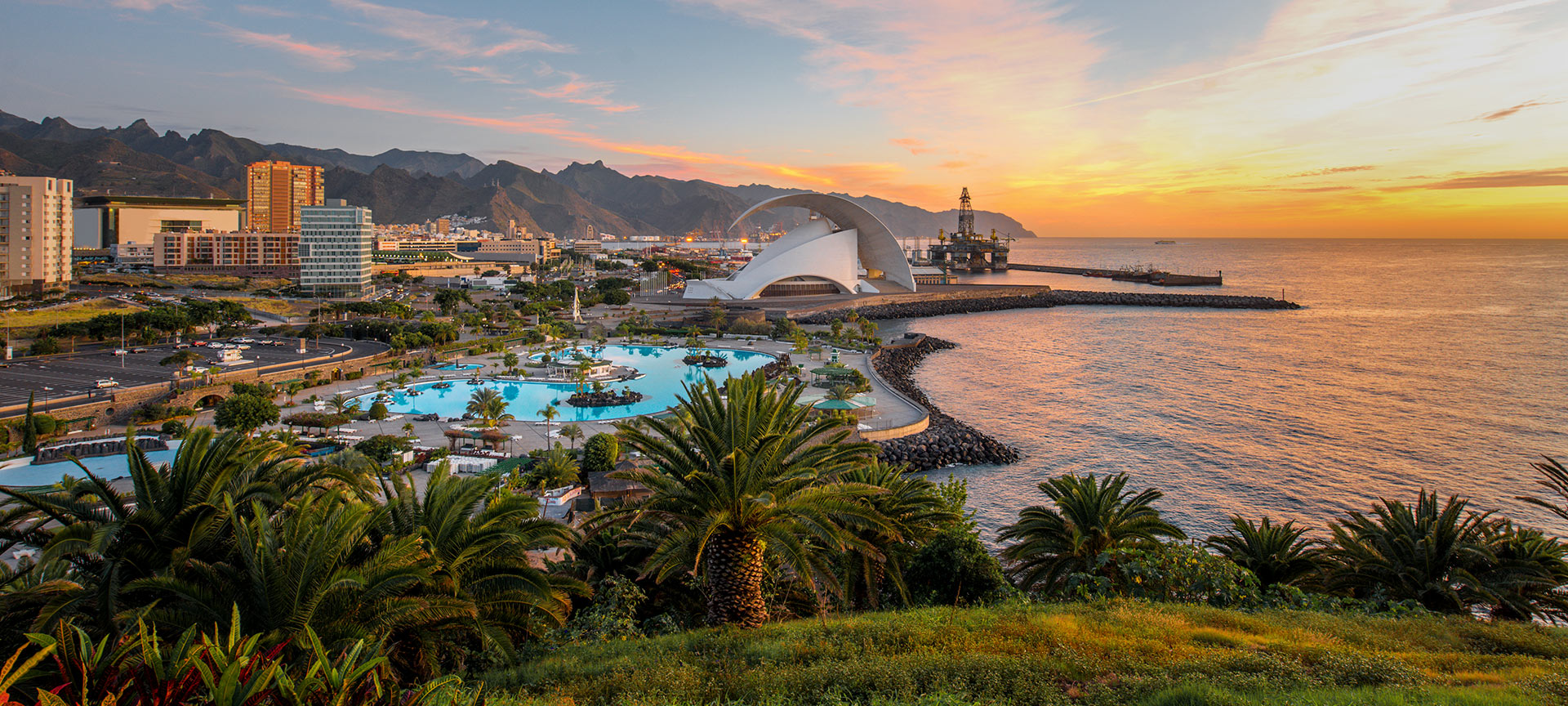
Walks that make you fall in love with the historic gardens of Spain
Get ready to take a tour of some of Spain's most beautiful gardens, which are also part of the European Route of Historic Gardens. Enjoying a walk in the open air in these well-tended spaces is a true delight. All of them hide impressive sculptures and fascinating stories. Abandon yourself to silence, seek peace and let your senses fly while you enjoy the beauty of their landscapes.
-

Gardens of Santa Clotilde
If you are on holiday in the Costa Brava and you find yourself in Lloret de Mar, come and visit these gardens. You'll feel like you're on a fairytale balcony overlooking the Mediterranean. At the beginning of the 20th century, the Marquis of Roviralta built his country home and the splendid gardens that surround it here on a cliff overlooking the sea. They are currently open to the public, and you can stroll among their ponds, sculptures of mythological characters such as Venus, stairs adorned with ivy that disappear in a waterfall of vegetation... Don't miss the main staircase – the Staircase of the Sirens – which descends from an esplanade to the sea, or the large amphitheatre-like square. On your way you will be surrounded by pine, lime, oak and cypress trees; and if you go as far as the Boadella viewpoint, you will be able to see sea birds, the mouth of the river Tordera and the coves of S'Agulla, Santa Cristina and Boadella. Throughout the year, these gardens tend to hold concerts or workshops for the whole family. And a final curiosity: Did you know that these gardens have served as the setting for the series “The House of the Dragon”, a prequel to “Game of Thrones”?
-
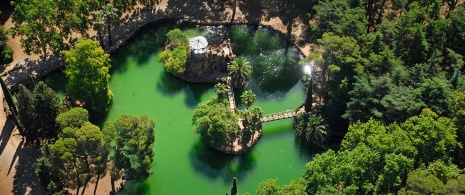
Parc Samà Historical Garden
In Cambrils (Tarragona) you will find one of the best examples of 19th-century Romantic gardens. The experience of walking here is like visiting an open-air botanical museum with exotic plants and different animals. This park was created by the Marquis of Marianao in 1881 in an effort to transport the visitor to the splendour of colonial Cuba. Today, it has several very remarkable areas such as the greenhouse, which houses more than 75 species of palms, the plant labyrinth, the lookout tower and the hundred-year-old trees that surround the palatial home. You also can't miss the beautiful marsh cypress on the island by the bridge overlooking the canal, the waterfall and the lake. And if you want to discover the animals that live there, take a tour of the farm, the fallow deer forest, the macaw area and the old pheasant farm. If you are travelling with your family, you will be pleased to know that they have a play area and picnic basket service.
-

Raixa Estate
Now travel with your imagination to the Tramuntana mountain range of Majorca, specifically to Bunyola, where there is an 18th-century Italian-style villa with a lot of history. Why are the gardens that surround it so evocative? Perhaps because of its monumental staircase, its great pond or the panoramic views. In the lower part of the gardens you will find the beautiful entrance gate, the orchard and different gardens such as the Orange Garden, the Gallery Garden and the “d'Entrada” Garden. You will see that the upper gardens are arranged around a monumental staircase dedicated to the deity Apollo. Here you can also enjoy a huge pond 98 metres long, an artificial cave, a small hermitage and a neoclassical viewpoint located at the highest point. You can also check out a visitor centre dedicated to the Sierra de Tramuntana to learn much more about its natural assets. This farm has served as a set for different films, and it hosts different activities such as flora and fauna observation, cooking workshops and telescope observation. Do you want to experience it for yourself?
-
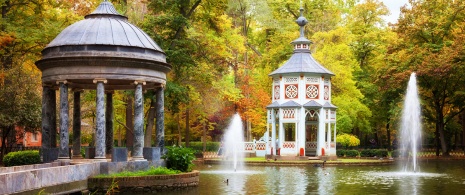
Cultural landscape of Aranjuez
Let's shift to the region of Madrid, specifically to the Royal Palace of Aranjuez and its gardens, awarded the World Heritage designation by UNESCO. This entire cultural landscape was initially designed by the monarch Felipe II in the 16th century until it became, over the centuries, the spring country residence of the various Spanish kings. Today, walking through the more than 111 hectares of its gardens is one of the most wonderful experiences you can have in the Madrid area. There you will find the Garden of the Island, from the 16th century, which is the closest to the palace. In reality, it is a set of different gardens with fountains adorned with sculptures of characters such as Hercules and Hydra, Apollo, the Boy with Thorn, Venus or Bacchus. It is worth stopping next to the well-known Castañuelas waterfall to let yourself be swept away by the sound of the water. Did you know that this garden was invented to recreate the idea of paradise on Earth? A little further from the Palace is the Prince's Garden, from the 18th century. It is the largest fenced park in Europe, with 150 hectares, and has more than 190 species of trees. When you enter, you discover much more than greenery. You will find the Chinoiserie Pond filled with birds and fish and with the classical and Chinoiserie pavilions; the Casa del Labrador, a beautifully furnished day residence for royalty after a day of hunting; the Royal Falouas Museum with a collection of boats that were used to simulate naval combat on the Tagus River; and the Royal Falouas Museum with a collection of boats that were used to simulate naval combat on the Tagus River. There is a tourist train that runs through part of these gardens, as well as a boat that allows you to go out on the river. This is especially perfect if you are travelling as a family.
-

Gardens of La Granja de San Ildefonso
In the neighbouring province of Segovia, you have the opportunity to visit a true icon of the French formal style of the 17th century, although they were built in the 18th century: the gardens of the Royal Palace of La Granja de San Ildefonso. Thanks to the abundance of water in the area, King Philip V was able to commission the construction of spectacular fountains whose hydraulic systems are preserved to this day, such as those of Fame, the Baths of Diana or the striking Horse Race. The garden's sculptural ensembles, which combine lead painted in bronze colours and marble statues, easily catch the eyes of all visitors.
-

Heritage Gardens of the Alhambra and the Generalife
If you have never visited the Alhambra of Granada, don't think twice, because you would be missing out on one of the most beautiful monumental sites in the world. The Alhambra was a palace, citadel, fortress and residence of the Nasrid sultans starting the 13th century; and since then, its gardens have been an inseparable part of the palaces of the Alhambra and the Generalife.Walking among them is an indescribable experience that awakens the senses and the emotions: The sound of the fountains mingles with the scent of roses, violets, lilies, wallflowers, water lilies, myrtle, basil, thyme, rosemary, lavender and jasmine. Everything has symbolism and conceals different legends.The ensemble of medieval gardens is perhaps the most special of all, as you discover places such as the beautiful Arrayanes and Los Leones courtyards; although there are also Renaissance gardens, such as the 17th-century courtyard of La Reja, the Adarves in the Alcazaba and 19th-century gardens such as the Altos del Generalife.If you can, get a combined ticket that allows you to see the gardens during the day as well as the monuments lit up by moonlight.
-
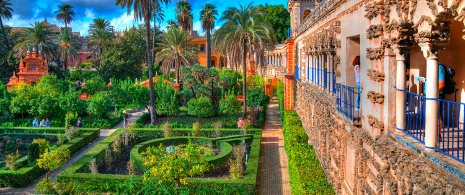
Gardens of the Real Alcázar Palace in Seville
Without leaving the region of Andalusia, its capital, Seville, gives you the opportunity to visit other unique historical gardens: those of the Royal Alcázar of Seville. They occupy 75% of the almost 100.000 square meters of this royal residence, declared World Heritage along with the Cathedral of Seville and the Archive of the Indies. You will find yourself in gardens of Islamic, Renaissance and Romantic influence, made up of more than 20,000 plants of at least 187 different species. The Islamic courtyards of Yeso, León and La Contratación stand out, as well as the Renaissance gardens of Las Damas or La Danza and the modern gardens, Laberinto and Inglés. They account for almost 40% of the public garden space in the historic city centre.
-

Monasterio de Piedra
The landscape grandeur that awaits you in the historic garden park of the Monastery of Piedra, in municipality of Nuévalos in Zaragoza, Aragón, is indescribable. At every step, you will discover countless trails where the wide variety of flora and fauna forms an ecosystem of enormous biological value, bathed by the waters of the Piedra River. Rare species such as the stag beetle and the white-throated dipper meet century-old ash trees up to 40 meters high, as well as one of the few hackberry forests preserved in Spain.Its lakes and streams, and the mysterious caves and waterfalls with dramatic cascades, such as Cola Caballo or La Caprichosa, over 30 metres high, will invite you to seek out the perfect photo in every corner of this idyllic space.
-
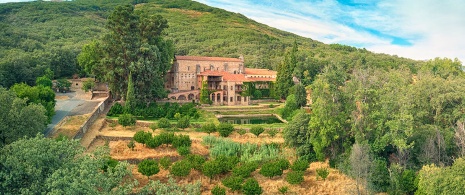
Gardens at Yuste Monastery
The region of Extremadura also holds a treasure in the form of a historic garden. It can be found in the Monastery of San Jerónimo de Yuste, in the heart of La Vera, in the province of Cáceres. Water plays a prominent role in these magnificent gardens, which have a pond that was used by Emperor Charles V himself for fishing. Passionate about gardens since childhood, it is said that the monarch wanted to reproduce in Yuste the beauty of the Gardens of the Real Alcázar, where he married Isabella of Portugal in 1526, and those of the Alhambra, which they both later visited.During your walk, you will enjoy a combination of secluded garden spaces and more open spaces surrounded by water, interspersed with vegetable gardens and fruit orchards, especially citrus trees.
-
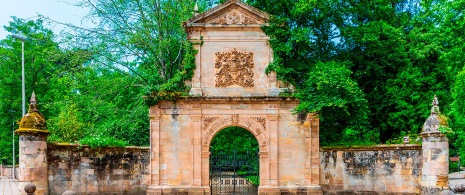
Puente San Miguel gardens
If you are in Cantabria, you should know that there is also a historic garden to admire there. It is located in the municipality of Puente San Miguel, and its creator was the discoverer of the Altamira Cave, Marcelino Sanz de Sautuola. In the Altamira Cave museum, you can see a faithful replica of the prehistoric site, in the nearby and popular Santillana del Mar.Surrounding the manor house that presides over the estate, you will find a large mass of trees, including the Chinese metasequoia, American sequoias, horse chestnuts, Lebanese cedars, Irish yews and a eucalyptus tree from 1867, among many others.
-

Gardens of Galicia
We will end our tour in Galicia, which has at least nine historic gardens that are pure art and that are guaranteed make you fall in love with this region of Spain. You can get to know them by following a route in search of the beautiful and enigmatic camellias from the East, the Albariño vineyards or the exotic trees. You can also discover the beautiful pazos, typical centuries-old Galician manor houses where nobles and even kings once lived. These are the seven pazos whose gardens will take your breath away: Mariñán, Santa Cruz de Rivadulla, Oca, Rubianes, Quinteiro da Cruz, Lourizán and Quiñones de León.You can also take advantage of the trip to visit the Alameda Park, with views of the old town of Santiago de Compostela and its Cathedral that are so beautiful they seem surreal. This route would be incomplete without a visit to the gardens of Soutomaior Castle, an imposing palatial fortress that looks like something out of a film.
Travel plans for inspiring you


